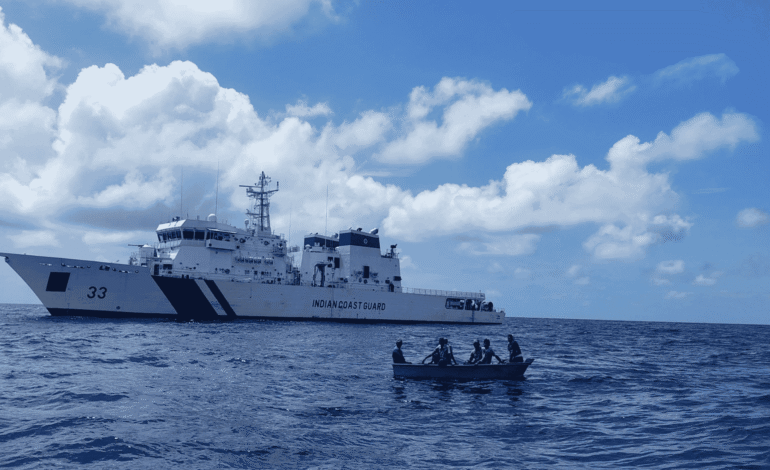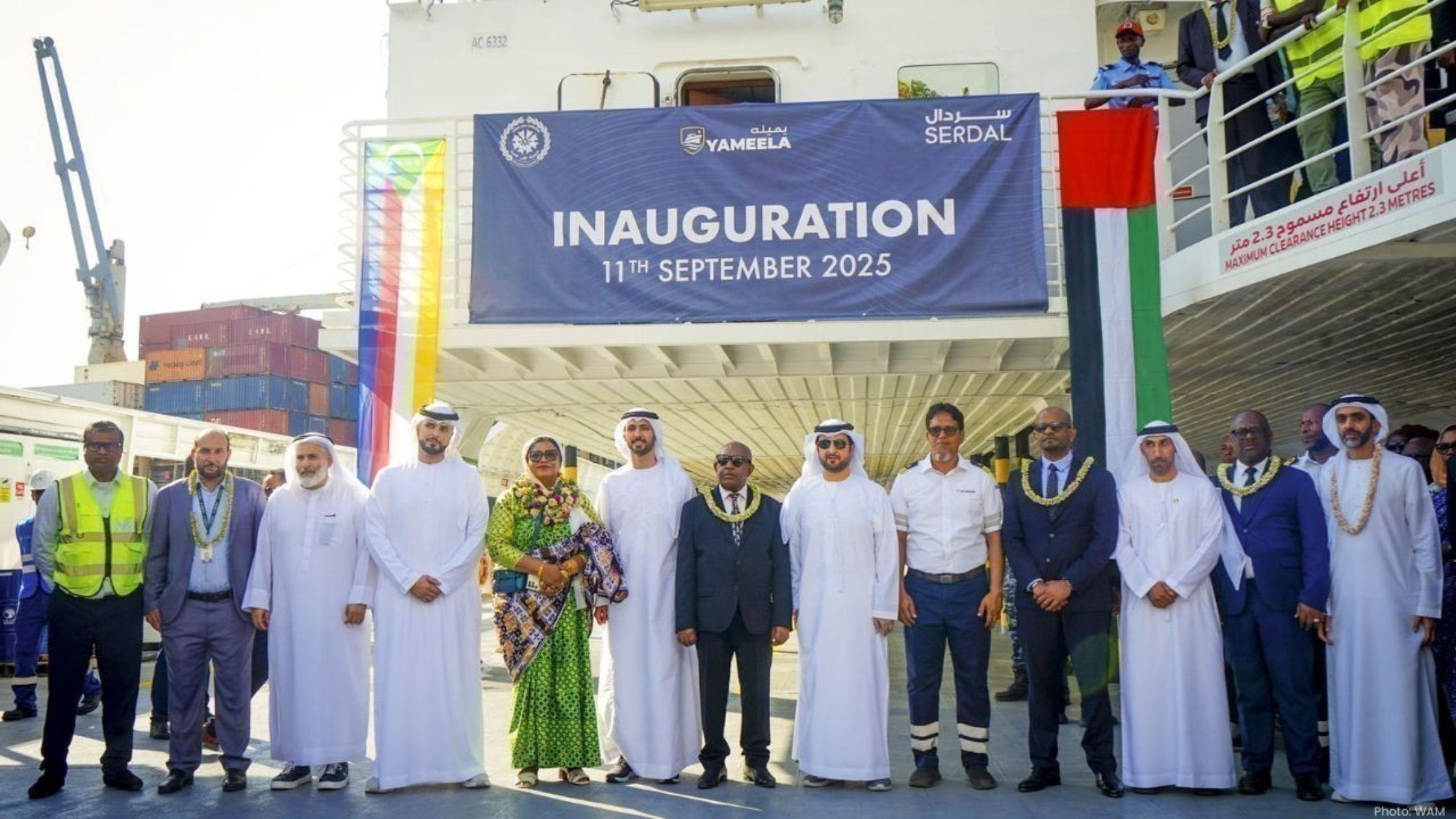Indian Coast Guard Rescues Six Crew Near Mangalore

In a compelling demonstration of maritime vigilance and rapid emergency response, the Indian Coast Guard (ICG) successfully rescued six crew members from a sunken vessel in the Arabian Sea, approximately 60 to 70 nautical miles southwest of Mangalore, Karnataka. The incident occurred in the early hours of May 14, when the cargo vessel MSV Salamath encountered critical flooding, leading to its eventual sinking.
This timely operation not only safeguarded six lives but also showcased the importance of constant maritime patrol, effective communication systems, and seamless cooperation between vessels navigating India’s western coastline.
Unexpected Crisis at Sea: Vessel Begins to Sink
The MSV Salamath had departed Mangalore Port on May 12, fully loaded with a shipment of cement and other construction materials. The vessel was bound for Kadmat Island, a part of the Lakshadweep archipelago in the Arabian Sea. The crew, engaged in what was anticipated to be a routine voyage, encountered an unforeseen emergency just two days into the journey.
At approximately 5:30 AM on May 14, the crew detected water ingress. Despite their best efforts to manage the flooding, the situation rapidly deteriorated. Within a short span of time, the water level in the hull rose beyond control, forcing the crew to make a life-altering decision—abandon the ship.
With no time to transmit a distress signal, the six-member crew boarded a small dinghy in hopes of surviving the ordeal. Alone in the vastness of the sea, their fate now depended on being discovered in time.
A Chance Sighting Sparks a Swift Rescue Response
Several hours passed with the crew adrift in the open sea. Their break came when the transiting vessel MT Epic Susui spotted their dinghy approximately 52 nautical miles off Surathkal, a coastal zone near Mangalore. At around 12:15 PM, MT Epic Susui relayed a distress alert to maritime authorities, reporting the presence of six individuals on a drifting boat.
The Indian Coast Guard, upon receiving this critical alert, responded immediately. ICG Ship Vikram, which was conducting a routine patrol in nearby waters, was diverted to the coordinates provided by the reporting vessel. Time was of the essence, and the Coast Guard’s familiarity with the region’s marine routes allowed for an efficient navigation plan to be executed swiftly.
Survivors Found and Safely Retrieved
Guided by the information relayed through the distress call, ICG Ship Vikram arrived at the reported location and quickly located the dinghy. The rescue team found all six crew members alive but fatigued, having endured several hours of exposure to the sun, saltwater, and uncertainty.
The crew was promptly brought aboard and administered necessary first aid. Medical assessments were conducted to ensure they were stable and free from life-threatening conditions. The Indian Coast Guard’s priority remained ensuring their immediate safety before transferring them ashore.
The rescued crew members were identified as Ismail Shareef, Alemun Ahmed Bhai Ghavda, Kakal Suleman Ismail, Akbar Abdul Surani, Kasam Ismail Mepani, and Azmal. Their collective effort to stay together and keep the dinghy afloat in high seas underscores both their training and resilience.
From Sea to Shore: Return to New Mangalore Port
Following the successful retrieval, the six survivors were transported safely to New Mangalore Port, where they arrived on May 15. Port health officials and maritime authorities were ready to receive them and conduct a formal debriefing. Their families, informed of their rescue, awaited their return with relief.
At the port, medical teams conducted follow-up examinations to identify any delayed symptoms or complications. The survivors were later taken in for formal questioning by local authorities, a standard procedure in the aftermath of a marine incident.
Investigative Focus: What Caused the Sudden Flooding?
The exact cause of the vessel’s flooding remains undetermined. Maritime authorities have launched a formal inquiry, hoping to gather more details from the rescued crew. While no official conclusions have yet been made, possible contributing factors under consideration include structural failure, overloading, improper cargo placement, or adverse sea conditions.
The vessel’s last known cargo consisted primarily of cement and construction materials—a typical load for shipments destined for island territories. While not hazardous, such cargo requires balanced loading to maintain a ship’s stability.
Authorities will also examine the maintenance history of MSV Salamath. Regular inspections are crucial for vessels operating on coastal routes, particularly those carrying heavy and dense cargo. Investigators are expected to inspect registration logs, past voyage data, and any previous records of structural complaints to determine whether mechanical or human oversight played a role in the vessel’s demise.
Indian Coast Guard’s Role: Vigilance and Rapid Deployment
This incident once again underlines the Indian Coast Guard’s vital role in ensuring maritime safety. With a broad mandate that includes search and rescue, environmental protection, anti-smuggling, and maritime law enforcement, the ICG has evolved into one of the most dependable arms of India’s coastal security network.
In this particular operation, the ICG demonstrated rapid mobilization, accurate navigation, and human-centered service. Ship Vikram, already deployed on a routine patrol, proved to be in the right place at the right time. The professionalism of the crew onboard ensured that the survivors received care and comfort after their ordeal.
The successful rescue further reinforces the importance of patrolling ships in key areas of maritime traffic. It also highlights the symbiotic relationship between merchant vessels and maritime enforcement agencies—where information sharing and swift communication can turn potential tragedies into success stories.
The Broader Significance of Maritime Safety Protocols
Though fortunate in outcome, the MSV Salamath incident is a stark reminder of the dangers seafarers face every day. For many small to mid-sized vessels operating on coastal routes, particularly those carrying essential supplies to remote islands, safety procedures, navigation systems, and communication protocols must be rigorously maintained.
Modernizing cargo vessels and enforcing standard safety protocols—including satellite-based communication, water-level sensors, and emergency alert systems—could reduce risks of similar incidents. Additionally, better training for crew in emergency abandonment, first aid, and use of distress signals increases survivability when things go wrong at sea.
As the Indian Coast Guard and port authorities continue to investigate, this episode also opens the door for evaluating existing safety regulations for small and medium-sized cargo vessels across the region.
New Mangalore Port: A Crucial Gateway for Relief and Logistics
The role of New Mangalore Port in this rescue operation cannot be understated. As one of the major ports on India’s west coast, it provides essential maritime infrastructure for shipping, cargo transfer, and emergency response.
In this situation, the port authorities coordinated the reception of the survivors and facilitated medical and administrative follow-up procedures. Ports like New Mangalore are not only trade gateways but also serve as lifelines in times of distress, offering shelter and support when emergencies at sea escalate.
A Maritime Crisis Averted Through Coordination and Courage
The successful rescue of the six crew members from MSV Salamath underscores the effectiveness of India’s maritime safety mechanisms and the dedication of those tasked with guarding its coastal waters. While the exact cause of the vessel’s sinking awaits clarification, what is certain is that a tragedy was averted thanks to timely communication, proactive patrolling, and the bravery of those who acted without hesitation.
This incident serves as a reminder of the unpredictable nature of the sea and the importance of constant preparedness, both for those navigating the waters and those stationed to protect them. The Indian Coast Guard continues to uphold its commitment to life, safety, and maritime security—ensuring that, even in the face of adversity, hope and help are never too far away.








1 Comment
[…] In a bid to revive routes that were discontinued and boost its global engagement strategy, the Indian state is offering financial incentives of up to Dh66,000 (approximately Rs1.5 million) per flight […]
Comments are closed.